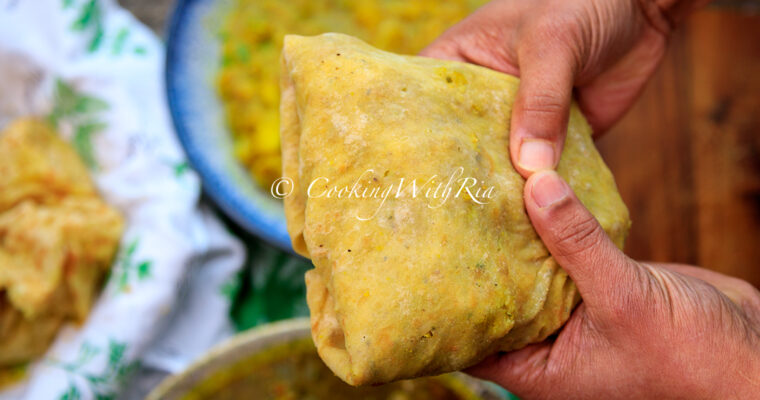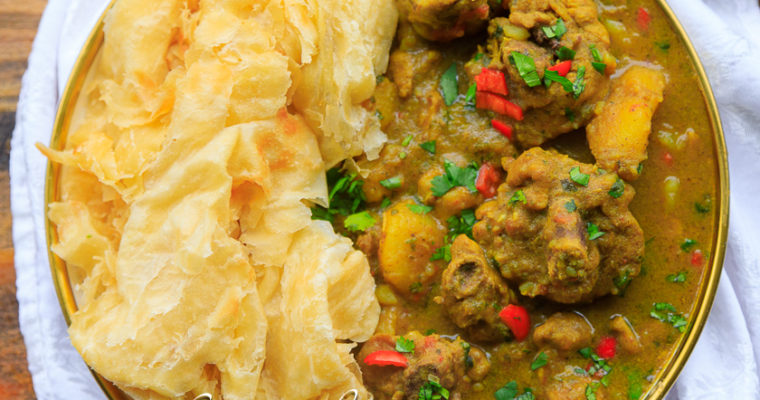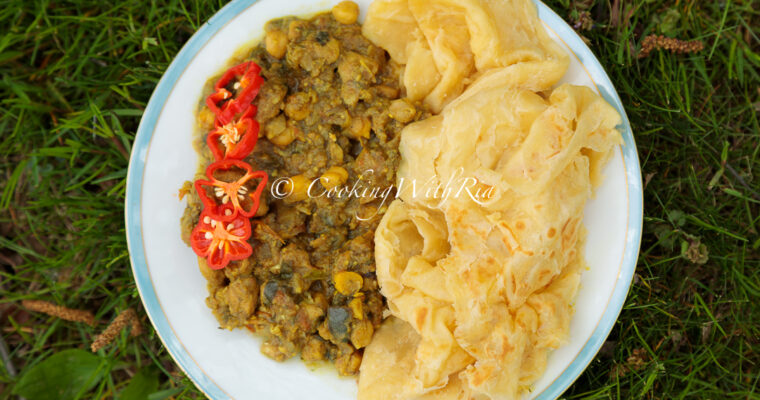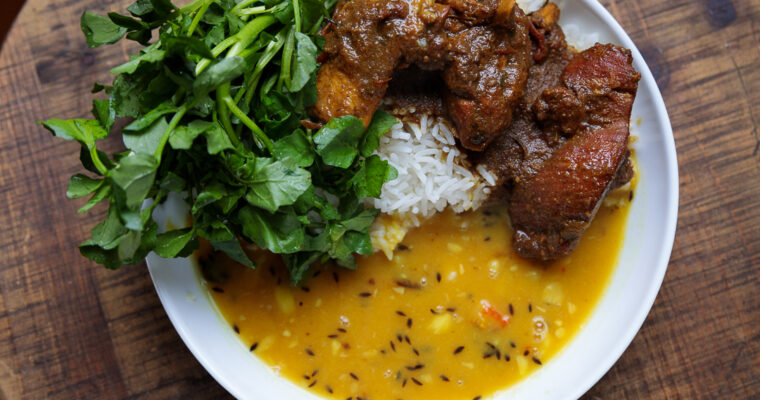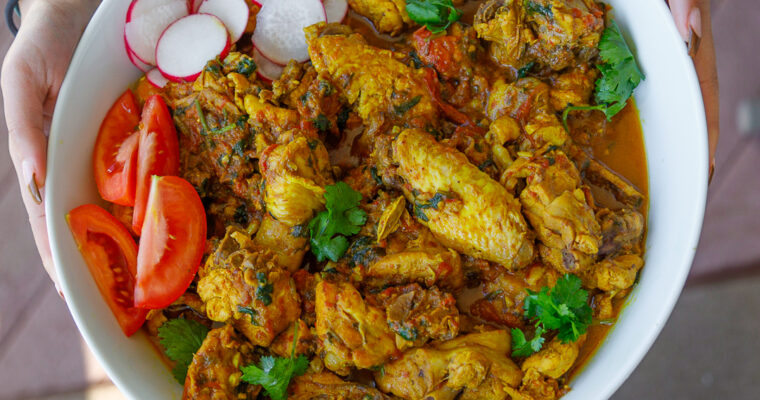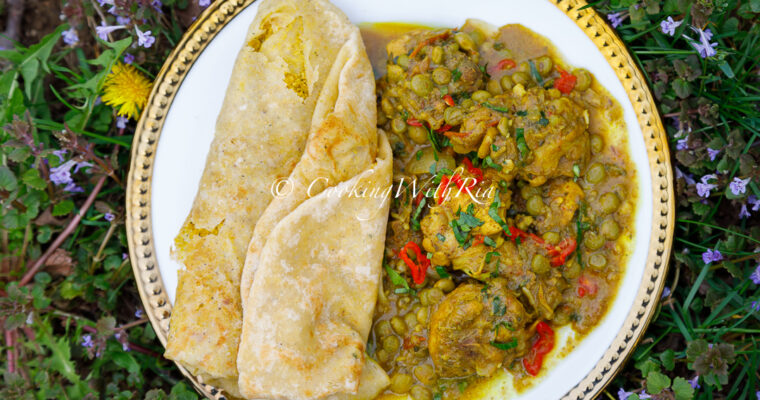Bhojpuri originated from the Bhojpur region, which encompasses parts of eastern Uttar Pradesh, western Bihar, and the northern regions of Jharkhand in India. The language is named after this region and has historically been spoken by people living in and around these areas. Bhojpuri is part of the Eastern Indo-Aryan language family and is closely related to languages like Magahi, Maithili, and Awadhi.
Many of the Indian indentured laborers who were brought to Trinidad and Tobago between 1845 and 1917 came from these parts of northern India, and they brought the Bhojpuri language with them. Over time, Bhojpuri mixed with English, Creole, and other languages in Trinidad, leading to its influence on the local Indo-Trinidadian dialects and culture.
While Bhojpuri is no longer widely spoken, many words and phrases have been retained and are used in everyday language. Here are some Bhojpuri words commonly used in Trinidad:
1. Aja
- Meaning: Grandfather
- Usage: This term is still commonly used to refer to one’s grandfather, particularly in rural Indo-Trinidadian families.
- Example: “Mi aja used to tell stories of India.”
2. Ajee
- Meaning: Grandmother
- Usage: Refers to one’s grandmother and is often used in familial settings.
- Example: “Ajee always made the best dhal and roti.”
3. Chowka
- Meaning: Cooking area or kitchen
- Usage: Though less common today, it used to refer to the place where food is prepared.
- Example: “We clean the chowka before cooking for a puja.”
4. Patti
- Meaning: Village
- Usage: While not frequently used anymore, it historically referred to a small settlement or community in rural areas.
- Example: “In India, mi patti had big mango trees.”
5. Larki/Larka
- Meaning: Girl/Boy
- Usage: These terms are sometimes used informally to refer to children or young people.
- Example: “That larki over there is my cousin.”
6. Baap
- Meaning: Father
- Usage: Although not as common in everyday language, “baap” is still understood by many Indo-Trinidadians to mean father.
- Example: “Mi baap was a strict man.”
7. Maati
- Meaning: Earth or soil
- Usage: Refers to the ground or soil, often in a cultural or religious context.
- Example: “We used to play in the maati as children.”
8. Suhag
- Meaning: Marital bliss or auspiciousness in marriage
- Usage: Used during Hindu weddings or in religious contexts related to marital life.
- Example: “She prayed for a long life of suhag with her husband.”
9. Ghar
- Meaning: Home
- Usage: A common word used to refer to one’s house or home.
- Example: “Come by mi ghar after work.”
10. Bhaiya
- Meaning: Older brother
- Usage: Still used by some Indo-Trinidadians to refer to older male siblings or as a respectful way of addressing a male.
- Example: “Bhaiya will help you with the groceries.”
11. Ganga
- Meaning: River
- Usage: While derived from the Ganges River in India, it is used symbolically in a religious context in Trinidad.
- Example: “We made offerings by the ganga during the puja.”
12. Joota
- Meaning: Shoes
- Usage: Still used occasionally, especially in rural areas, to refer to shoes.
- Example: “Take off your joota before entering the house.”
13. Jharu
- Meaning: Broom
- Usage: Refers to the traditional broom used for sweeping.
- Example: “Use the jharu to sweep the yard.”
14. Lauki
- Meaning: Bottle gourd (a type of vegetable)
- Usage: This vegetable, popular in Indian cuisine, is also used in Indo-Trinidadian dishes.
- Example: “We made a curry with lauki today.”
15. Ram Ram
- Meaning: A greeting (like “hello”) invoking the name of Lord Rama
- Usage: A traditional greeting still used by some Indo-Trinidadians, particularly the older generation.
- Example: “Ram Ram, Uncle! How are you today?”
16. Suhani
- Meaning: Pleasant or beautiful
- Usage: Used to describe something or someone pleasing or beautiful.
- Example: “It was a suhani evening at the temple.”
17. Chatai
- Meaning: Mat
- Usage: A mat traditionally used for sitting, especially during religious ceremonies.
- Example: “We sat on the chatai during the prayer session.”
18. Barfi
- Meaning: A type of sweet
- Usage: A popular dessert made from condensed milk and sugar, commonly served at weddings and religious festivals in Trinidad.
- Example: “The barfi at the wedding was delicious.”
19. Bhoj
- Meaning: Feast
- Usage: Refers to a large communal meal, typically following a religious ceremony.
- Example: “The family hosted a bhoj after the puja.”
20. Dulahin
- Meaning: Bride
- Usage: Commonly used in traditional wedding ceremonies to refer to the bride.
- Example: “The dulahin looked beautiful in her red sari.”
21. Har
- Meaning: Garland (typically of flowers)
- Usage: Used during religious and wedding ceremonies where garlands are offered or worn.
- Example: “The groom placed the har around the dulahin’s neck.”
22. Thakur
- Meaning: Lord or deity
- Usage: Refers to gods in Hinduism and is sometimes used as a respectful title.
- Example: “We pray to Thakur every morning.”
23. Patra
- Meaning: Leaf or plate (used for serving food)
- Usage: Traditionally, meals were served on leaves; the term is still used in cultural contexts.
- Example: “We ate the bhoj on patra at the yagna.”
24. Puja
- Meaning: A Hindu prayer ritual
- Usage: Puja refers to a religious offering made to deities, which is a central part of Indo-Trinidadian religious life.
- Example: “They performed puja for their new home.”
25. Zameen
- Meaning: Land
- Usage: Refers to land or property, often used in discussions about farming or real estate.
- Example: “Our ancestors worked hard to own this zameen.”
These Bhojpuri terms have been preserved through generations and reflect the cultural and linguistic heritage of Indo-Trinidadians, maintaining a connection to their ancestral roots while evolving in a uniquely Trinidadian context.

